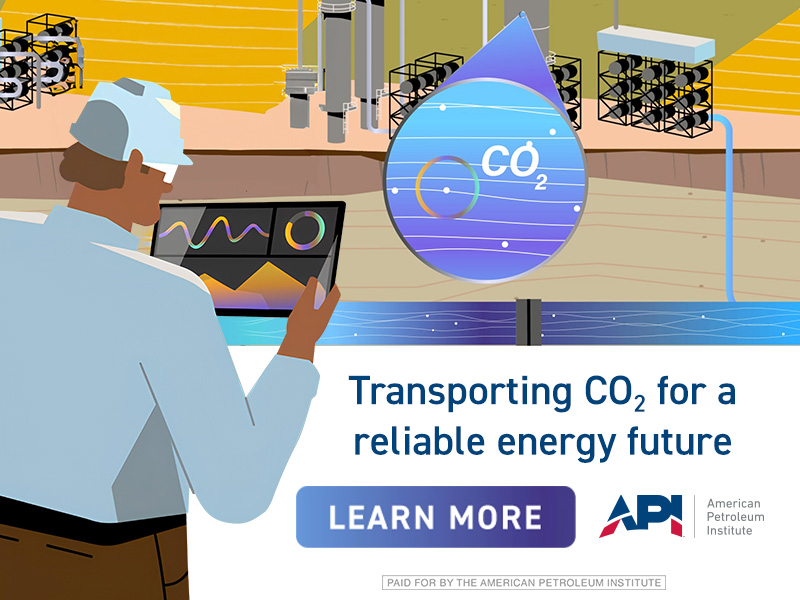CO₂ Pipelines: What Are They & Why Are They Important?
CO2 Pipelines: What Are They & Why Are They Important?
CO2 pipelines can boost jobs, strengthen energy security, and help lower carbon emissions. From the development and maintenance of the pipelines themselves to the connection of ethanol plants and industrial facilities to storage sites, CO2 infrastructure supports good-paying jobs. While CO2 is not an energy product, CO2 pipelines can help advance responsible energy production here in the U.S. by providing the backbone that make carbon capture technologies possible.
Getting to Know CO2
Carbon capture and storage (CCS) technologies capture carbon dioxide (CO2) emissions from industrial sources and geologically store them about a mile or more underground.
CCS technologies include:
- Capturing CO2 from large emissions sources, called point-source capture.
- Removing them from the atmosphere, called direct air capture.
CCS can be used to lower the carbon footprint of ethanol production and hard to decarbonize industries like cement, steel and manufacturing.
These energy-intensive industries need high-temperature heat, often requiring oil and natural gas. Additionally, some industrial processes emit CO2 emissions as a byproduct, known as process emissions. CCS is a promising technology that can capture and store these unavoidable emissions.
Click here to learn more about CCS.
Transporting CO2

Pipelines six, eight or even 24 inches in diameter move compressed CO2 as a supercritical liquid from where it is captured – whether that is an ethanol plant or industrial facility – to where it will be stored.
More than 5,000 miles of CO2 pipelines across the U.S. transport approximately 80 million metric tons of CO2 per year, and CO2 pipelines have been operating in the U.S. for more than 50 years.
As safety is a top priority for the natural gas and oil industry, operators have incorporated CO2 pipelines into their zero-incident safety culture. API has developed several standards and emergency response materials to help advance pipeline safety.
Did You Know?
The U.S. Department of Transportation Pipeline and Hazardous Materials Safety Administration (PHMSA) sets the standards for the safe construction and operation of CO2 pipelines, applying safety requirements to CO2 pipelines similar to those for pipelines carrying hazardous liquids.
CO2 Pipelines: American Innovation in Action
For reliable energy to power our homes, schools and businesses, we depend on an underground network of pipelines to transport oil, natural gas and other energy from where it is produced to where it is needed.
The natural gas and oil industry is now taking this technology to transport CO2 from where it is produced to well sites where the CO2 can be stored about a mile or more underground.
By using CCS to either remove CO2 from the air directly or prevent the CO2 from entering the atmosphere in the first place, our industry is taking steps to help contribute to cleaner air. And CO2 pipelines help form the infrastructure that makes this process possible.


